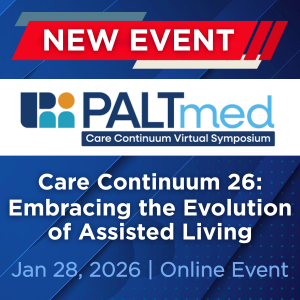CPG Pocket Guides
Showing 13 - 24 of 57 results
Clinical Practice Guidelines (CPG)
Dehydration and Fluid Maintenance CPG
This CPG offers a structured approach to the recognition, assessment, treatment, and monitoring of dehydration and fluid and electrolyte imbalances and acknowledges the ethical implications of this condition for patients, their families, and the staff of post-acute and long-term care (PALTC) facilities. It...
Clinical Practice Guidelines (CPG)
Delirium, Depression, and Dementia (3Ds) CPG
Each of the 3-D's--Delirium, Depression, and Dementia-- represents a distinct condition that is observed in a variety of clinical settings. Get the latest information on all three in this newly updated clinical practice guideline.
Clinical Practice Guidelines (CPG)
Dementia CPG
Dementia, a disorder characterized by progressive decline in multiple areas of cognitive function, causes a range of cognitive, mood, behavioral, and functional impairments. Optimal management of dementia involves the entire interdisciplinary team, with practitioners playing an important leadership role. T...
Clinical Practice Guidelines (CPG)
Depression CPG
Depressive symptoms are common among older adults and can have a major effect on their quality of life. It has been estimated that between 12 and 16% of older adults living in post-acute and long-term care (PALTC) facilities have major depression and 50% may have a minor depressive disorder. This CPG assi...
Long Term Care Information Series
Determination of Medical Necessity of Rehabilitation Therapy Services
Medicare defines medical necessity as a determination that a service is reasonable and necessary for the diagnosis or treatment of illness or injury. However, the use of this term in health care settings is controversial and often confusing. Applying the concept of medical necessity to rehabilitation thera...
Clinical Practice Guidelines (CPG)
Diabetes Management CPG
Residents of post-acute and long-term care (PA/LTC) facilities who have diabetes often take multiple medications and experience frequent infections, high rates of cardiovascular complications, dehydration, hospitalizations, hyperosmolar states, and physical and cognitive disability. A comprehensive approa...
CPG Teaching Slides
Diabetes Management Teaching Slides
The teaching slides are created for the IDT in language and format that can be easily understood. The challenges of diabetes management in the PALTC setting such as the failure to review glucose logs or the reliance on sliding scale insulin protocols are identified; common co-morbidities are also listed. T...
Clinical Practice Guidelines (CPG)
Falls and Fall Risk CPG
This tool guides physicians, other practitioners, and staff in assessing and managing individuals who have a recent history of falls or who are at risk of falling. This CPG will help identify ways to modify some of the risk factors for falls, as well as identify ways to adjust the patient's environmen...
Clinical Practice Guidelines (CPG)
Gastrointestinal Disorders CPG
Although aging has relatively minimal effects on gastrointestinal (GI) function, age-related changes can cause or contribute to several GI disorders. Aging can result in impaired function of the gastric mucosal barrier and increased risk of peptic ulcer disease. Patients residing in PALTC facilities typica...
Practice Management Tools
Guide to Post-Acute and Long-Term Care Coding, Reimbursement, and Documentation
Extensively updated to reflect major E/M coding changes for 2023, The Guide to Post-Acute and Long Term Care Coding, Reimbursement, and Documentation, is a popular and must-have publication that contains important documentation and medical decision making requirements as well as one or two Society-develope...
Long Term Care Information Series


